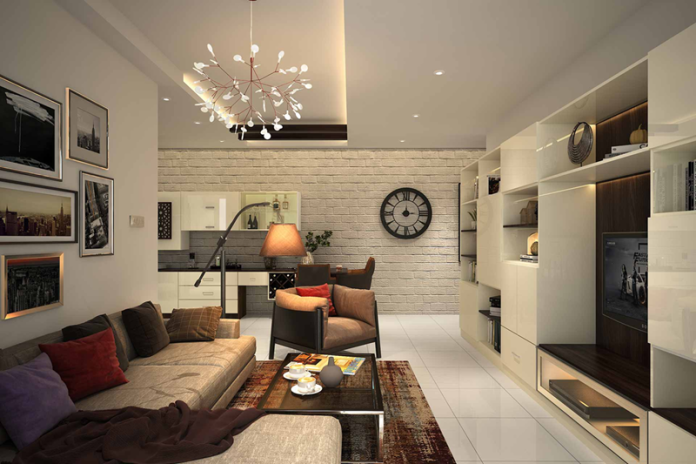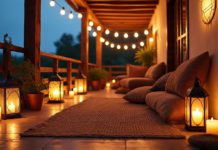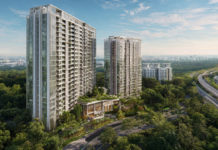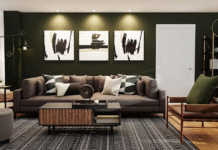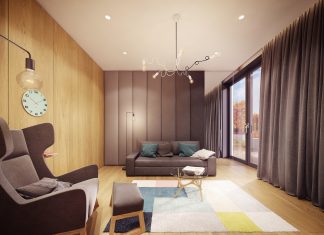The landscape of home lighting has undergone a remarkable transformation in recent years, with 2025 bringing an exciting array of innovative options that combine cutting-edge technology with stunning design. From smart lighting systems that adapt to your daily routines to eco-friendly fixtures that slash energy costs, homeowners now have unprecedented choices for illuminating their living spaces.
Smart lighting continues to evolve beyond simple voice control and scheduling. The latest systems incorporate advanced artificial intelligence that learns your preferences and adjusts automatically throughout the day. These systems can now detect your mood through smartphone integration and subtle environmental sensors, adjusting color temperature and brightness to enhance your well-being. For example, if you’re reading a book in the evening, the lighting will gradually shift to warmer tones to help prepare your body for sleep.
One of the most significant innovations is the new generation of modular lighting systems. These customizable fixtures allow homeowners to easily reconfigure their lighting design without professional help. Magnetic connection points and wireless power transmission enable users to rearrange light panels and elements like building blocks, creating different patterns and effects to suit various occasions or moods.
Sustainability remains a primary focus in 2025’s lighting solutions. The latest LED technology has achieved remarkable efficiency levels, with some fixtures using up to 95% less energy than traditional bulbs while lasting over 50,000 hours. Manufacturers have also made significant strides in developing biodegradable components and using recycled materials in fixture construction, addressing growing environmental concerns about electronic waste.
Natural light optimization has become increasingly sophisticated. New smart windows and skylights automatically adjust their tint and opacity based on external light conditions, while innovative light tubes and fiber optic systems can now transport and distribute natural sunlight throughout your home, even to windowless spaces. These solutions significantly reduce the need for artificial lighting during daylight hours while providing the psychological and physiological benefits of natural light.
The integration of health-focused lighting has reached new heights. Circadian rhythm lighting systems have become more refined, with fixtures that precisely mimic the color temperature and intensity of natural sunlight throughout the day. This technology has been shown to improve sleep patterns, increase productivity, and enhance overall well-being. Some systems now include UV-free antibacterial lighting modes, which can help sanitize spaces without harmful effects on occupants.
Aesthetic innovations have not been left behind in this technological revolution. Designer brands have embraced new materials and manufacturing techniques to create stunning “new modern” pieces that double as artistic installations (like these chandeliers from Hunter Fan).
Transparent OLED panels can transform from clear glass to luminous surfaces, while electrochromic materials allow fixtures to change colors and patterns on demand. These advancements have blurred the line between functional lighting and decorative art.
The rise of biophilic design has influenced lighting trends, with new fixtures incorporating natural elements and organic shapes. Living light fixtures that combine LED technology with actual plants have gained popularity, creating unique environments that bring nature indoors. Some of these systems include built-in hydroponics to maintain the plants, while others use preserved moss and other natural materials that require no maintenance.
Outdoor lighting has also seen significant innovation. Solar-powered fixtures have become more efficient and aesthetically pleasing, with new storage technologies ensuring reliable performance even during extended periods of cloudy weather. Smart pathway lights can now detect movement and adjust their intensity accordingly, providing both security and energy efficiency. Some systems even incorporate weather sensors to adjust their output based on atmospheric conditions.
The democratization of advanced lighting technology has made sophisticated systems more accessible to average homeowners. What was once considered luxury lighting is now available at more reasonable price points, thanks to improved manufacturing processes and increased competition in the market. This has allowed more households to enjoy the benefits of modern lighting solutions without breaking the bank.
Voice control and smartphone apps remain standard features, but the interfaces have become more intuitive and sophisticated. Artificial intelligence assistants can now understand complex lighting commands and create custom scenes based on natural language descriptions. Want to recreate the lighting from your favorite vacation spot or movie scene? Simply describe it, and your lighting system will analyze and reproduce the ambiance.
Installation and maintenance have been simplified through innovations in wireless technology and modular design. Many new fixtures feature tool-free installation and can be easily upgraded or repaired by replacing individual components rather than entire units. This approach not only reduces maintenance costs but also extends the lifespan of lighting systems while minimizing waste.
Looking ahead, the future of home lighting appears even brighter. Researchers are developing new technologies like quantum dot lighting, which promises to deliver even greater energy efficiency and color accuracy. Experimental systems using bioluminescent materials could eventually provide sustainable lighting solutions that require minimal external power.
As we progress through 2025, the choices for home lighting continue to expand and improve. The combination of enhanced functionality, improved sustainability, and stunning design options means that homeowners can now create lighting solutions that are not only beautiful and efficient but also contribute to their well-being and environmental responsibility. Whether you’re building a new home or upgrading an existing space, there’s never been a better time to explore the exciting world of modern lighting technology.
